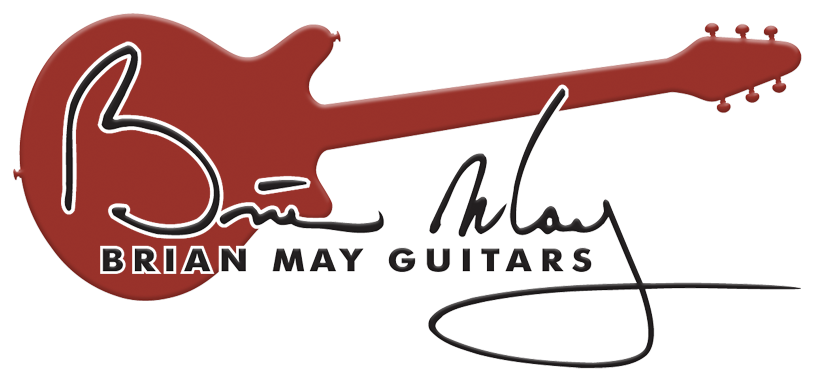THE BMG ARIELLE
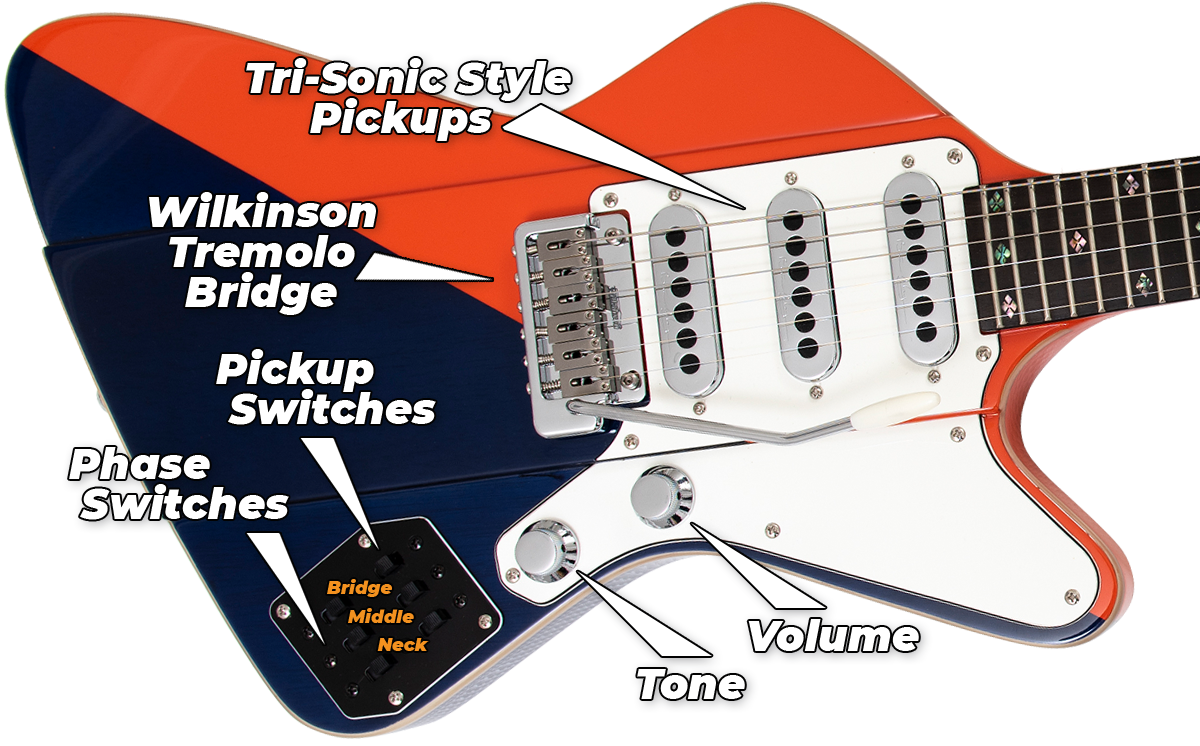
Tri-Sonic Style Pickups
The BMG Arielle features three BM brand Tri-Sonic style single-coil pickups. These are modern replicas of the Burns Tri-Sonics that Sir Brian May and his father, Harold, installed on the Red Special in the early ' 60s and, whilst there are some technical differences (their impedance is noticeably higher) they produce a faithfully accurate reproduction of the original tone.
First developed for use on Ormston Burns guitars in 1960, The term "Tri-Sonic" derives from the fact that the unit picks up sound from three points - the top and both sides - meaning that the vibration of the strings is sampled from a longer than usual length. In combination with the orientation of their isotropic ceramic magnets and the unique manner in which the coils are wound, such pickups produce a distinctive “big, round sound” with a richer harmonic content than any conventionally wound pickup.
The three pickups are wired in series for increased output and a fuller signal. When more than one pickup is active the resultant tone is more akin to that of a humbucker, with considerably more warmth and gain than a traditional parallel wired single-coil arrangement.
In addition, the middle pickup is reverse wound and reverse polarity (RWRP), emulating the configuration employed by Brian and his father. The pickup's magnetic pole is reversed and its coils physically wound in the opposite direction compared to the other pickups. Hence, when the middle pickup is selected in combination with either or both of the other pickups in phase, a hum-cancelling effect is created, reducing noise and hum in the output of the guitar.
In combination with the phase switching system employed on the BMG Arielle, the sound of the selected pickups can be tailored to produce an incredible variety of tones.
Volume & Tone Controls
Volume and tone are controlled by 250k pots with a Sprague 0.033μF 'Orange Drop' film capacitor delivering exceptional sonic purity, a nuanced tonal roll-off sweep and, with individual pickups or selected pairings, a pleasingly warm response, without getting too muddy or bright.
Please note that - unlike the the original Red Special, and the BMG Special and Super - these pots are positioned in the traditional configuration - ie. with the volume nearest to the right hand!
If required to secure the chrome UFO style control knobs, or remove them for any reason, use the smallest of the 3 allen keys provided (1.5mm) to tighten/loosen the grub screw located in the side of the knob as appropriate.
BM Switching System
The BMG Arielle (in common with the BMG Special and Super models) features the same pickup and phase switching system used in the original Red Special design. The twin banks of three switches are mounted on a separate control plate, with their orientation matching the pickup location - bridge to middle, left to right.
Following Arielle's exacting specifications, the switching circuitry is provided by industry leading electronics specialists Shin Chin. Six black DPDT switches, featuring high quality, silver-plated brass contacts, engage each pickup individually as well as providing dedicated phase reversal, a familiar configuration to RS aficionados that gives the BMG Arielle the same astonishing tonal dexterity as Sir Brian May's storied original.
Pickup Switches
The bank of switches nearest the bridge provides simple ON/OFF control for the three Tri-Sonic style pickups - Each pickup has its own dedicated switch with DOWN = ON, UP = OFF.
Maximizing the incredible versatility of the BMG Arielle, this system allows for pickup combinations of ALL 3 PICKUPS ON and NECK + BRIDGE, configurations not usually available on other, more conventional three pickup instruments. It also provides a true stand-by option, handy for both stage and studio performance. Simply flick all three switches to the UP/OFF position to silence the instrument's output signal.
Phase Switches
The bottom bank of switches controls the phase of the signal from each pickup. Engaging the switch reverses the phase of each pickup individually, allowing the pickups to be either IN PHASE or OUT OF PHASE relative to each other in any pickup combination.
Without taking a deep dive into the science of sound waves, it's probably easiest to adopt the convention that with its switch in the UP position, the output of the pickup has a POSITIVE phase, and in the DOWN position it has a NEGATIVE phase. Hence, when two pickups are selected and both phase switches are in the same position (either both UP or both DOWN), they will be In phase - if one switch is UP and the other is DOWN, the pickups will be out of phase
When two pickups are selected and in phase, their signals work together and sonically reinforce each other with the resultant output louder than either pickup on their own. When they’re out of phase, they work against one another, cancelling many frequencies. The resulting tone is the “leftovers” from these cancellations, typically rich in mid to high frequencies with the low frequencies reduced, giving the sound a characteristic thin, sharp quality.
Note that it is the reversal of the phase of two pickups RELATIVE to each other that yields the In phase or out of phase effect. Reversing the phase of a soloed, single pickup will have no significantly audible result - e.g. the bridge pickup by itself will sound the same regardless of the position of its phase switch.
For example, with the bridge and middle pickups active: sliding BOTH phase switches to either the UP or DOWN position will put the pickups in phase and produce the same, full sound favoured by Brian for much of his rhythm guitar work. Sliding the bridge pickup phase switch DOWN and the middle pickup phase switch UP will produce a thinner, out of phase tone. If the positions of the phase switches are reversed, the out of phase output will be broadly * the same.
Although the six switches ostensibly provide twenty-one different pickup/phase combinations, there is a degree of apparent redundancy due to the fact that some settings produce similar results as explained above. Of course, that still leaves an abundance of 13 possible unique combinations (14 if you include the "kill-switch" function), making the BMG Arielle an extremely versatile and powerful creative instrument.
* As has been discussed extensively amongst the RS community, the choice of which pickups to put out of phase in any pickup combination will make a subtle difference to the resulting tone, due to the phase relationship of each pickup coil relative to the adjacent coil and to the loudspeaker of the amplifier used. However, please be aware that your mileage may vary considerably, depending on the signal path and set-up, with regard to the significance of the perceived tonal variation between ostensibly duplicate combinations.
Wilkinson Tremolo Bridge
The Arielle features Trevor Wilkinson's WVP 2-point knife edge tremolo, its traditional, friction-free design providing one of the smoothest actions of any fulcrum vibrato currently available. With a sleek, low-profile surround restricting the sideways movement of the solid brass saddles, the WVP offers superior comfort, stability and performance.
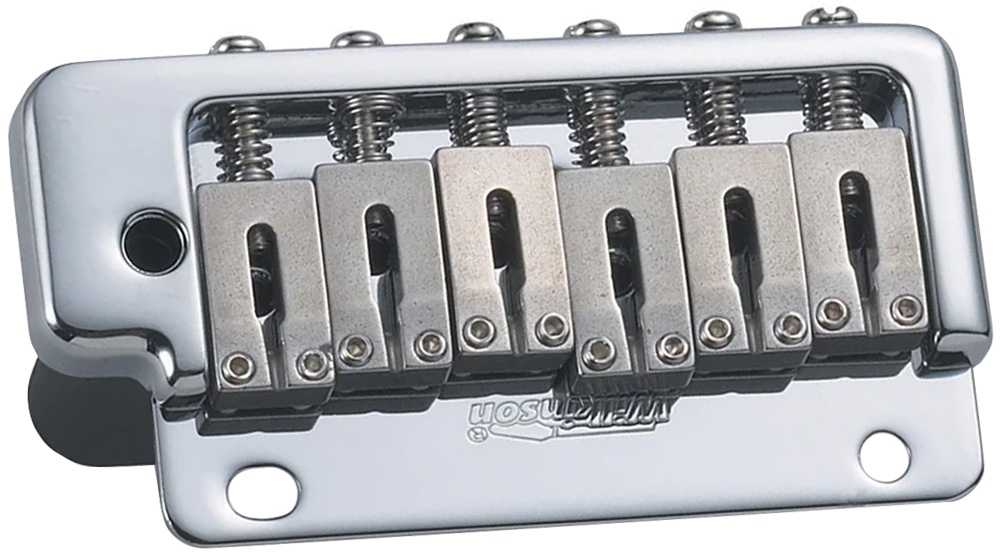
Features include a stamped steel, heat hardened top plate, 6-screw pivot mounting and a solid steel sustain block with "stagger-drilled" string holes to make corrections to the intonation a relatively simple job, without putting too much stress on the saddles. As with all steel blocks, it helps magnify the overall sustain, brightness and top end, resulting in a more expansive, sharper tone.
The custom, BM-style push-in tremolo arm is secured by a clamping bush inside the block, which can be tightened to taste by a small bolt on the rear of the block. The thread-less design means that the arm can be positioned at any orientation without interference.
Fitting The Tremolo Arm
- With the tremolo arm placed in the bridge unit, rotate the arm so that it runs parallel to the neck, with its end pointing at the headstock of the guitar.
- Depress the tremolo arm downwards, towards the guitar's body - this will raise up the back of the tremolo block, exposing a small grub screw which locks the tremolo arm in place.
- Use the smallest of the allen keys supplied with your BMG Arielle (1.5mm) to tighten the screw to secure the tremolo arm with the desired freedom of movement.
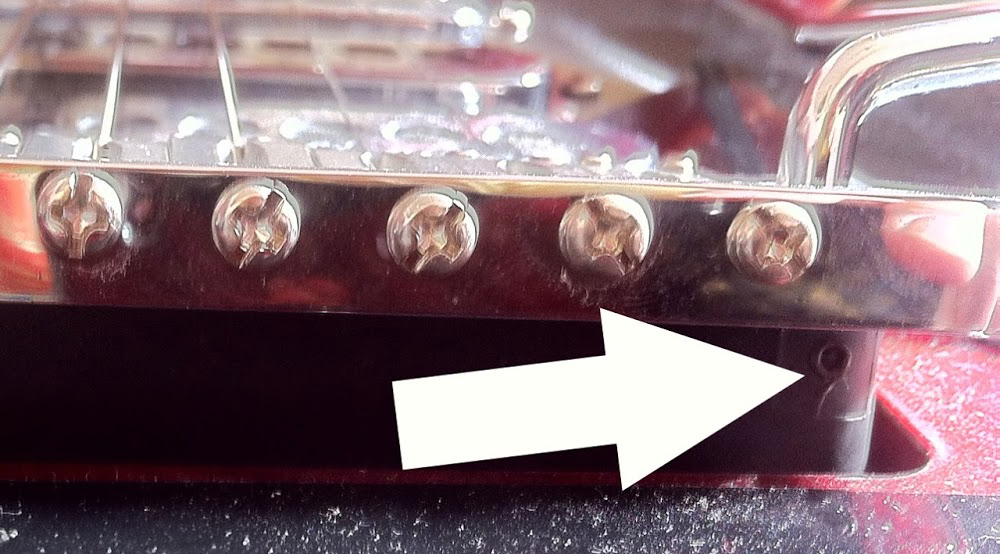
The Wilkinson 2-point tremolo system is designed to "float" due to the balance between the tension of the strings and the tremolo springs - after installing heavier strings, as well as checking the instrument's action / intonation, you may need to adjust the tremolo claw or add an extra spring to compensate for the additional string tension and ensure that the bridge sits level. We provide a spare spring with the BMG Arielle for precisely this purpose
Grover Rotomatic® Locking Tuners
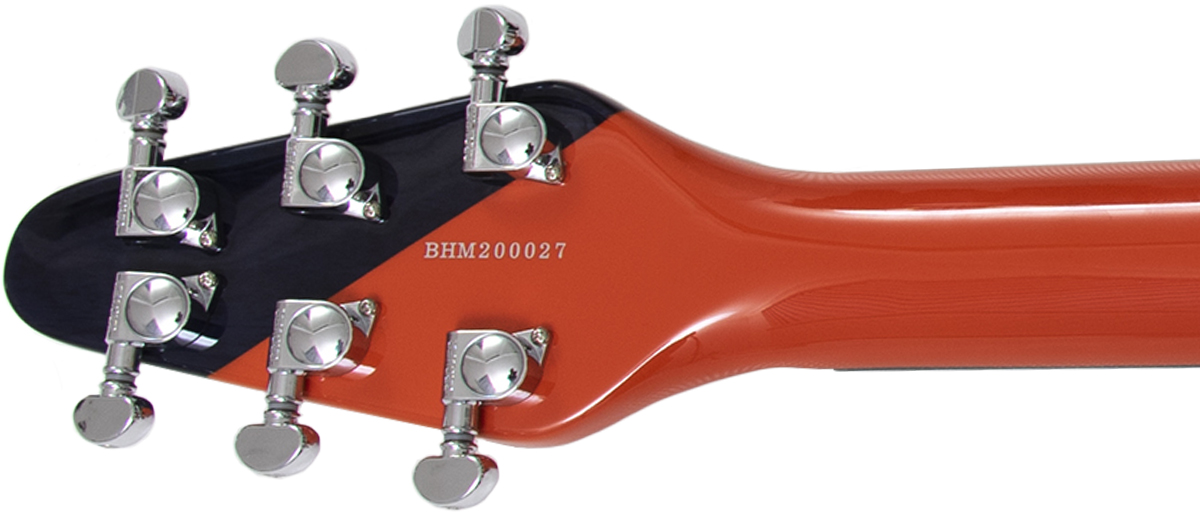
The original 2021 Arielle Two-Tone model is equipped with Grover 406 Mini-Locking Rotomatic® Tuners, making re-stringing a breeze and ensuring rock-solid tuning stability, even with lots of vibrato and string bends.
These superb, machine heads feature compact metal knobs with adjustable tension, an 18:1 gear ratio for fine tuning, lifetime sealed lubrication and Grover's ingenious Internal "Locking Cam" string post that automatically locks the strings as you tune.
You'll need fewer string wraps, change strings faster, and your tremolo will have more accurate return-to-pitch.
Fitting New Strings
- Turn the tip of the string post until it clicks into place. This will align the string post holes.
- Note that the string hole is off centre. Turn the tuner to rotate the post until the string hole is positioned away from the machine head, in line with the neck. Thread the entire length of the string up through the bottom of the hole and pull to tension by hand.
- Holding the end of the string, begin tuning. At first, only the inner Locking Cam in the string post will turn. Once the string is securely locked, the outer post will turn.
- Tune string to pitch... In under one string post revolution, you'll be in tune. And you'll stay in tune!
- Snip the end of the string.
Arielle models produced after Summer 2021 feature thumbwheel locking tuners - To restring using these, please refer to the instructions provided HERE.
